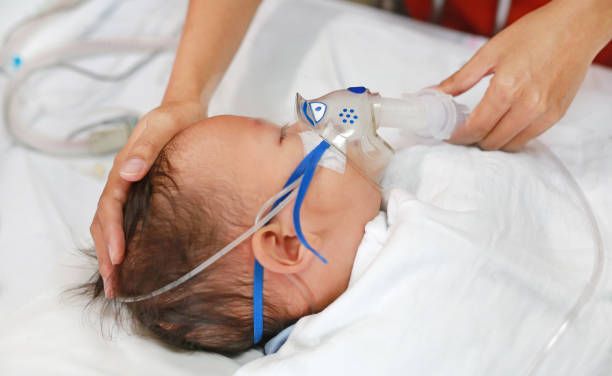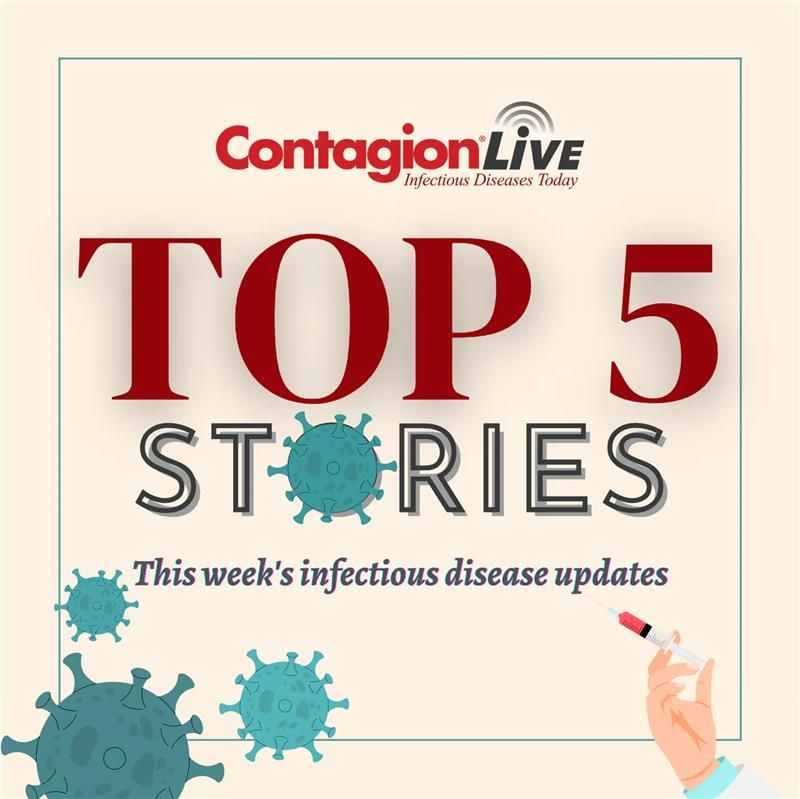Sick infant with RSV.
Image credits: Unsplash

In a study published in Emerging Infectious Diseases on respiratory syncytial virus (RSV) surveillance in the United States, 53.4% of infants (897 out of 1,680) were infected during infancy, with 2.8% requiring hospitalization. Among those with symptoms, 44.1% experienced lower respiratory tract infections (LRTI). The overall healthcare burden was substantial, with 1.5% of the entire cohort hospitalized and 8.5% suffering from RSV-related LRTI.1
Key risk factors for RSV infection included birth month (higher risk for those born in June), presence of siblings, daycare attendance, and socioeconomic factors like neighborhood poverty and public insurance. These findings establish benchmarks for assessing the impact of maternal vaccines and extended half-life monoclonal antibodies.1
Researchers employed active surveillance (qRT-PCR testing of nasal samples based on symptom surveys) and passive surveillance (serum antibody testing at age 1) across 11 pediatric practices. In-person assessments were conducted for infants with acute respiratory infections, collecting nasal wash and blood samples for analysis. The study calculated the 1-year prevalence of RSV infections, symptomatic diseases, LRTI, and healthcare utilization, utilizing multivariable logistic regression to evaluate risk factors for infection.1
The study has limitations regarding the generalizability of its eligibility criteria and sociodemographic characteristics. The cohort primarily consists of term infants, which may reflect a healthier demographic, yet this group accounts for half of RSV hospitalizations eligible for prevention products. There is a risk of misclassifying infants deemed uninfected with RSV, although proportions of symptomatic respiratory illness and overall RSV serologic positivity align closely with other studies. The cohort spans two RSV seasons (2012–2014), but the researchers do not expect this timeframe to significantly influence infection rates or risk factors, which remained consistent across seasons.1
3 Key Takeaways
- The study found that 53.4% of infants in the U.S. were infected with RSV during infancy, with 2.8% requiring hospitalization, indicating a significant healthcare burden.
- Key risk factors for RSV infection included the month of birth, presence of siblings, daycare attendance, and socioeconomic factors, highlighting areas for targeted intervention.
- Researchers used both active and passive surveillance across 11 pediatric practices to assess RSV prevalence and risk factors, noting limitations in generalizability due to the cohort primarily consisting of term infants.
Addressing The Key Risks
For protection against these risks, Sanofi announced2 that its immunization, nirsevimab, reduced hospitalizations for RSV in infants under 6 months of age by 82% compared to those who received no intervention. These interim results, published in The Lancet, come from the NIRSE-GAL study conducted in Galicia, Spain, and represent the first RSV season after nirsevimab’s introduction.3
Building on these promising findings, Ontario launched a universal RSV protection program aiming to enhance infant health by providing nirsevimab to all newborns and high-risk infants during the 2024-2025 RSV season. This initiative directly addresses the significant burden of RSV identified in previous studies, reinforcing the importance of nirsevimab in preventing
severe cases of the virus.4
In conclusion, the study highlights a significant burden of RSV among infants, with over half infected and notable hospitalization rates. These findings underscore the urgency of implementing effective prevention strategies to protect vulnerable populations, particularly during RSV seasons.
Read more: Contagion’s coverage on RSV immunizations and clinical management in our special featured section, RSV: A New Era in Prevention
References
-
Cacho F, Gebretsadik T, Anderson LJ, Chappell JD, Rosas-Salazar C, Ortiz JR, et al. Respiratory syncytial virus prevalence and risk factors among healthy term infants, United States. Emerg Infect Dis. 2024 Oct. Accessed September 20, 2024. https://doi.org/10.3201/eid3010.240609
-
Press Release: Beyfortus real-world evidence published in The Lancet shows 82% reduction in infant RSV hospitalizations. Sanofi. News release. May 2, 2024. Accessed September 20, 2024. https://www.sanofi.com/en/media-room/press-releases/2024/2024-05-02-05-00-00-2873804
-
Ares-Gomez S, Mallah N, Santiago-Perez M, et al. Effectiveness and impact of universal prophylaxis with nirsevimab in infants against hospitalisation for respiratory syncytial virus in Galicia, Spain: initial results of a population-based longitudinal study. Lancet. Published online April 30, 2024. Accessed September 20, 2024. doi: 10.1016/S1473-3099(24)00215-9
-
Santofi. Ontario Ministry of Health Announces a Universal Public Program with Beyfortus® this RSV Season. PRNewswire. July 25, 2025. Accessed September 20, 2024. https://prnmedia.prnewswire.com/news-releases/ontario-ministry-of-health-announces-a-universal-public-program-with-beyfortus-r-this-rsv-season-871818499.html








